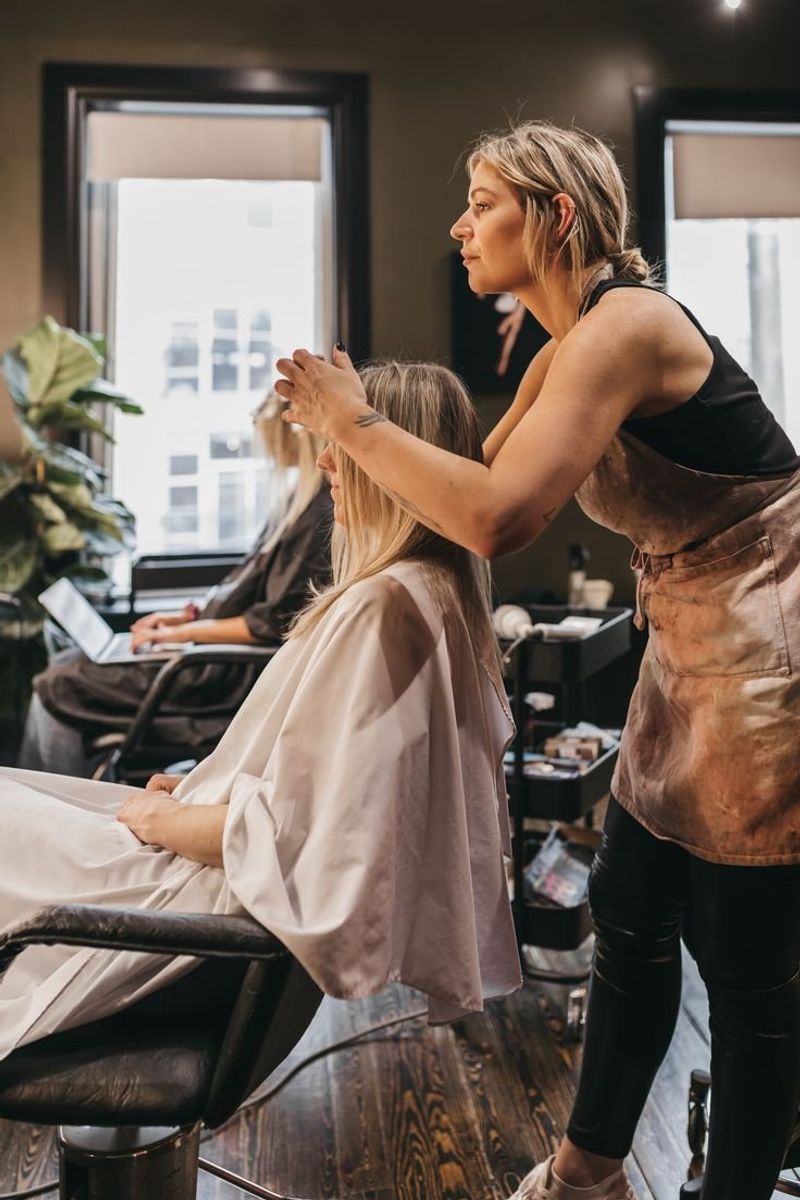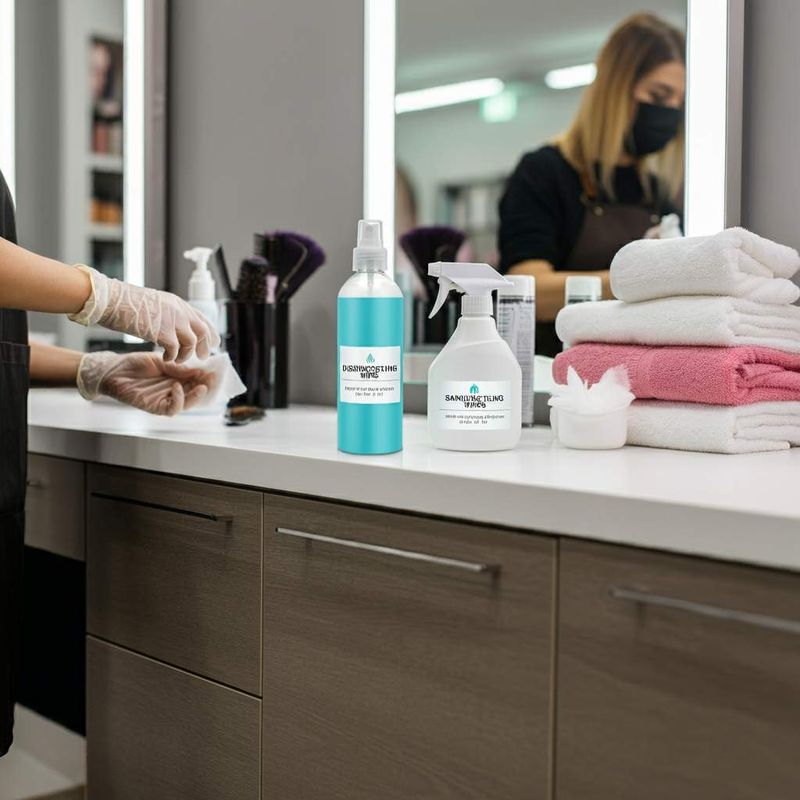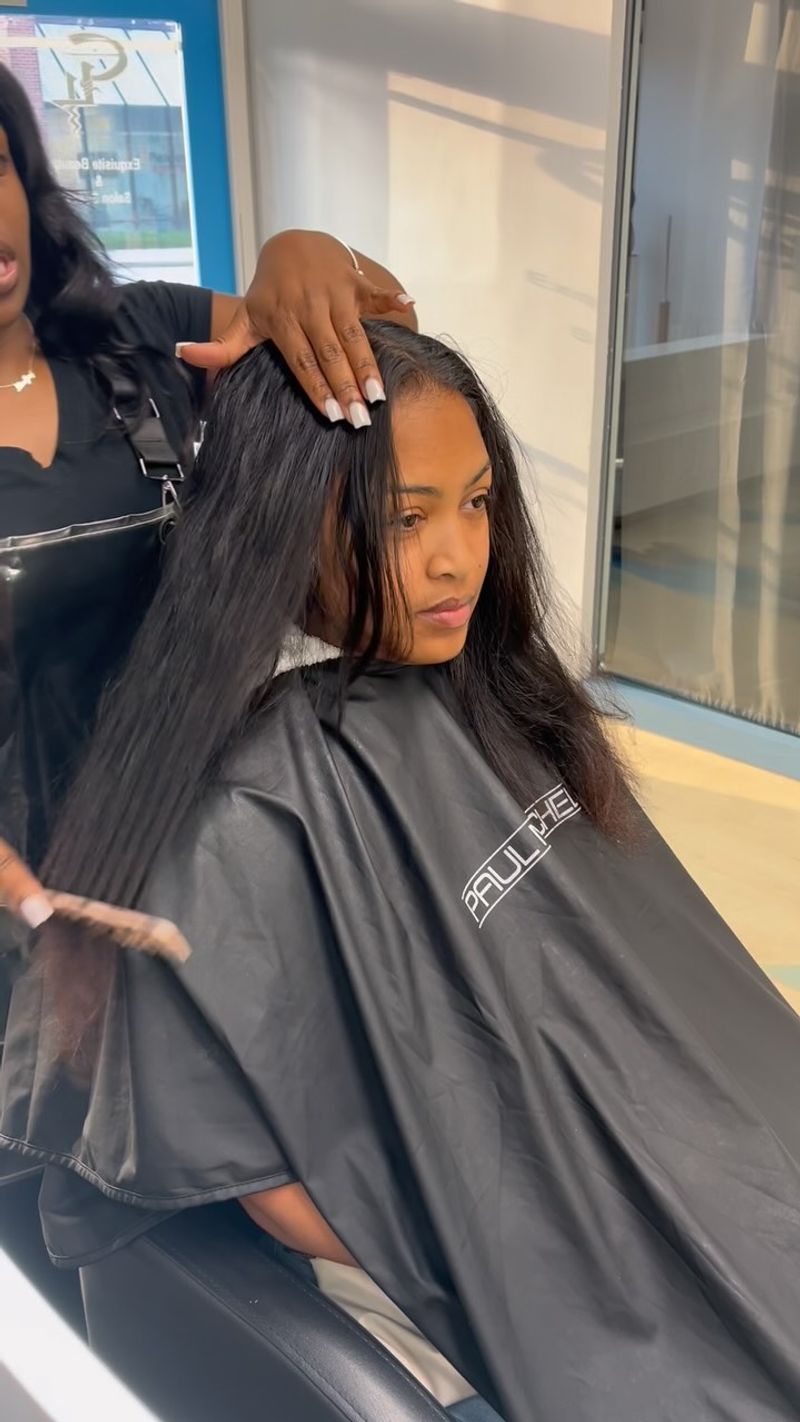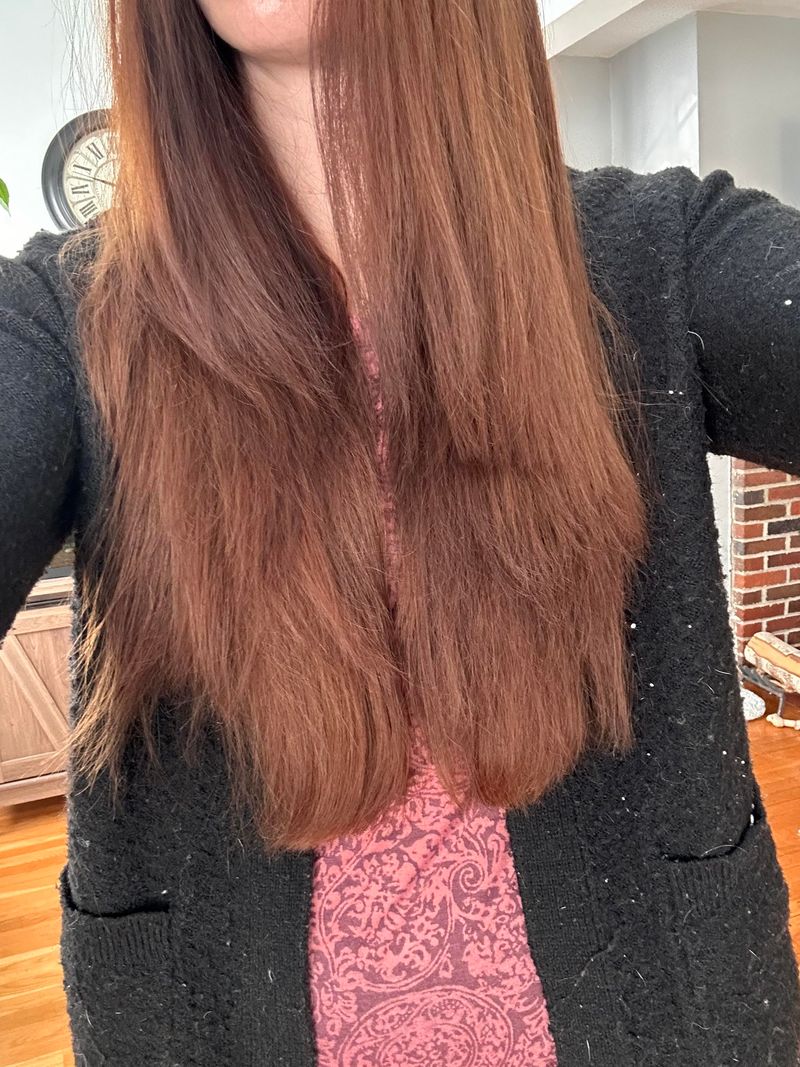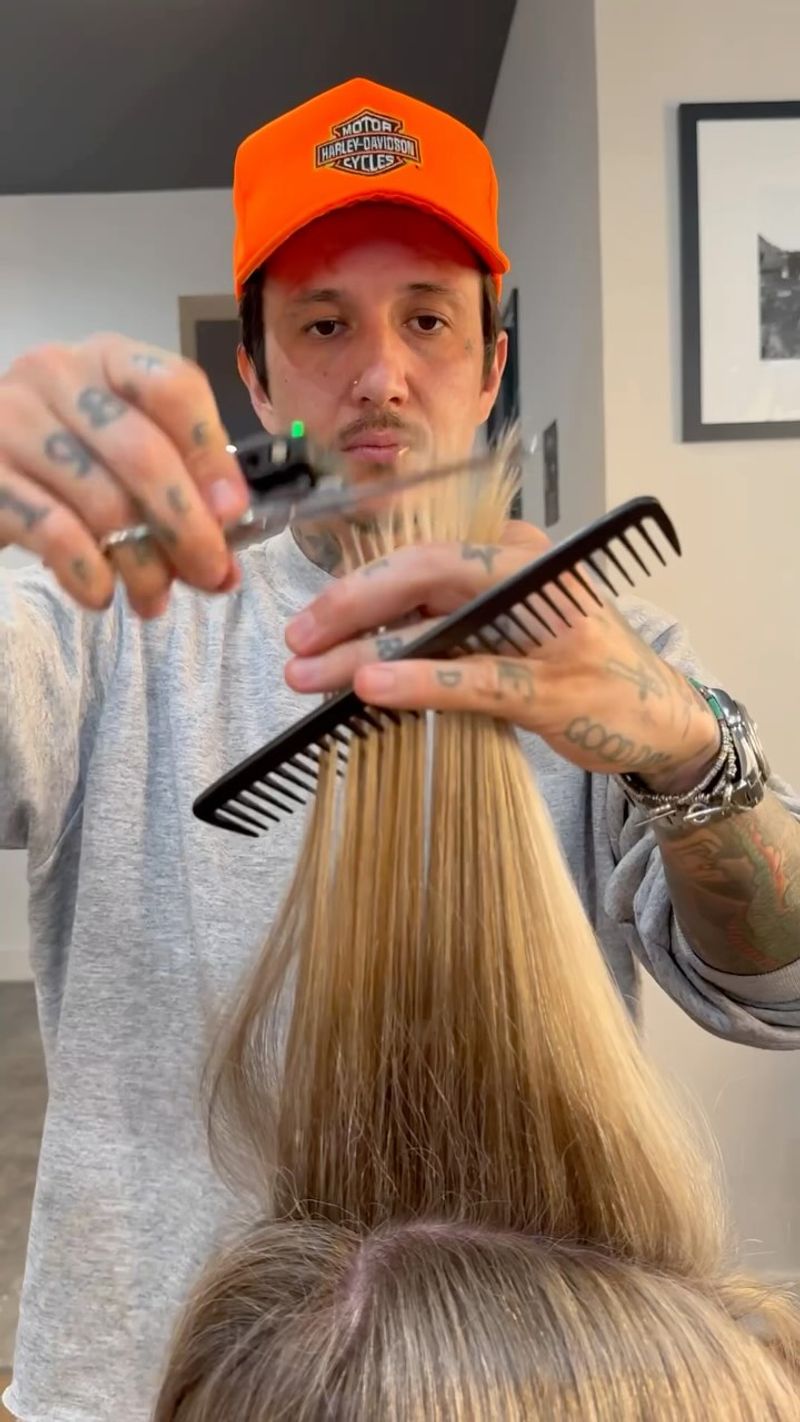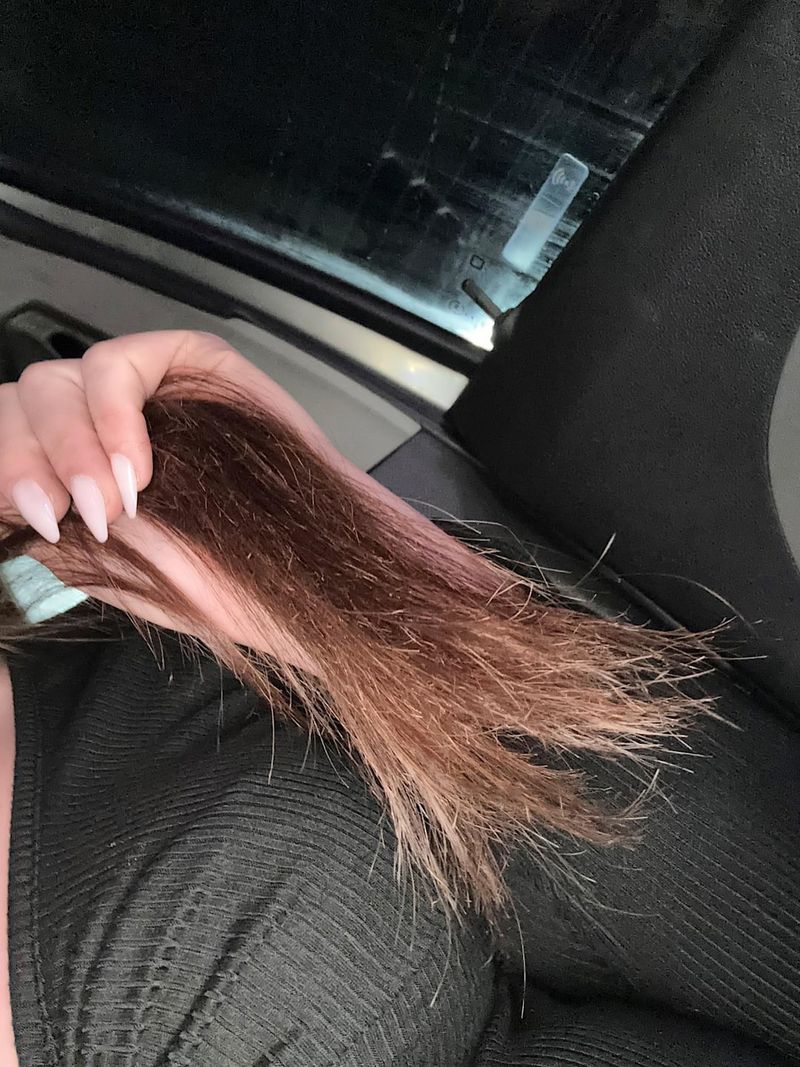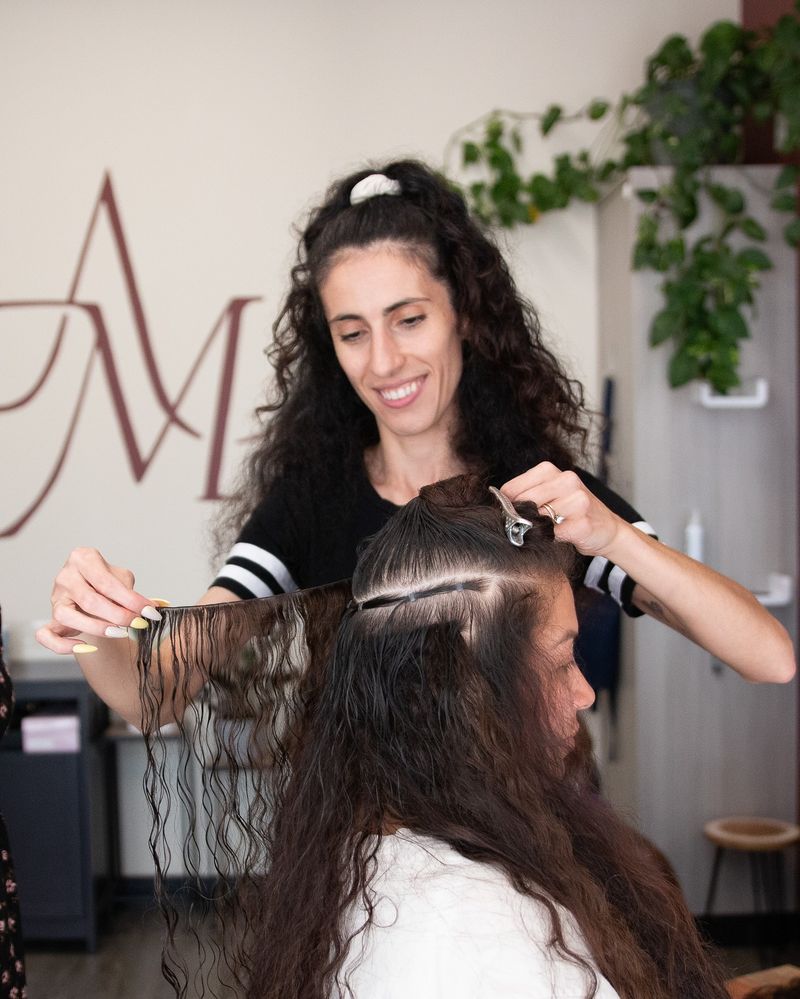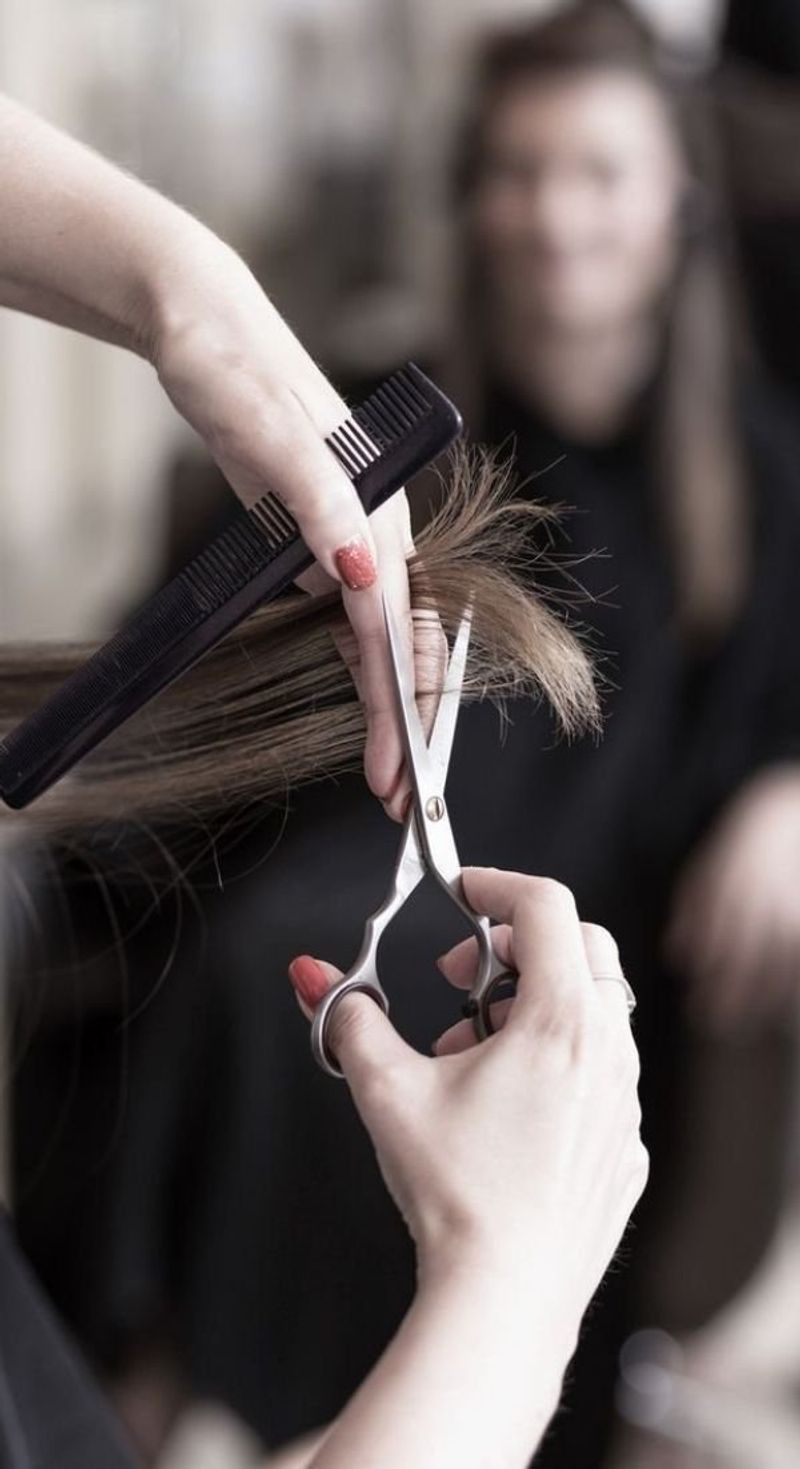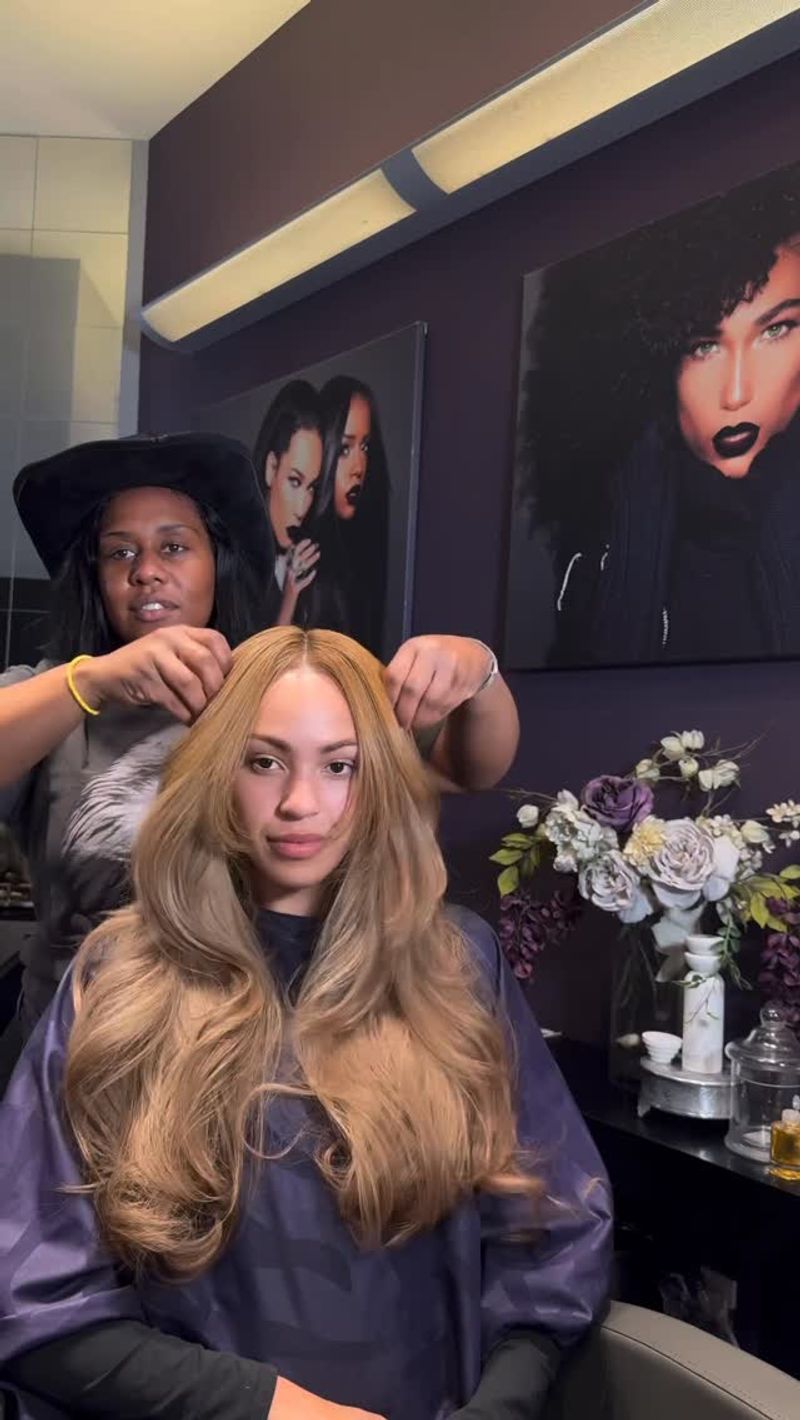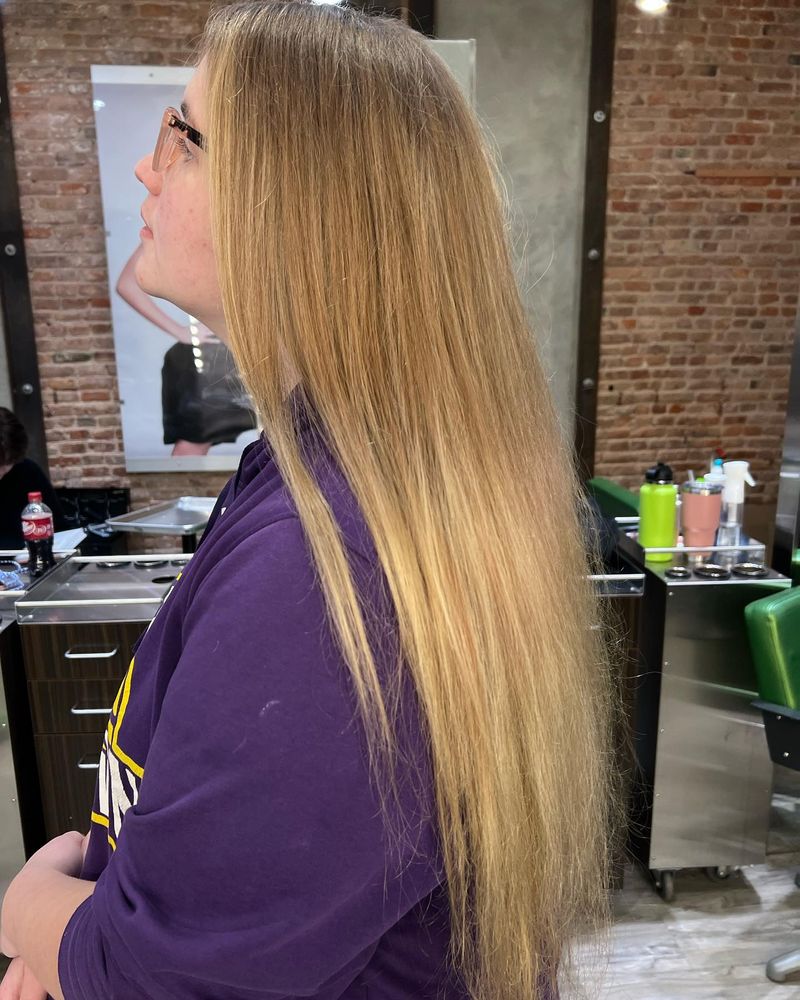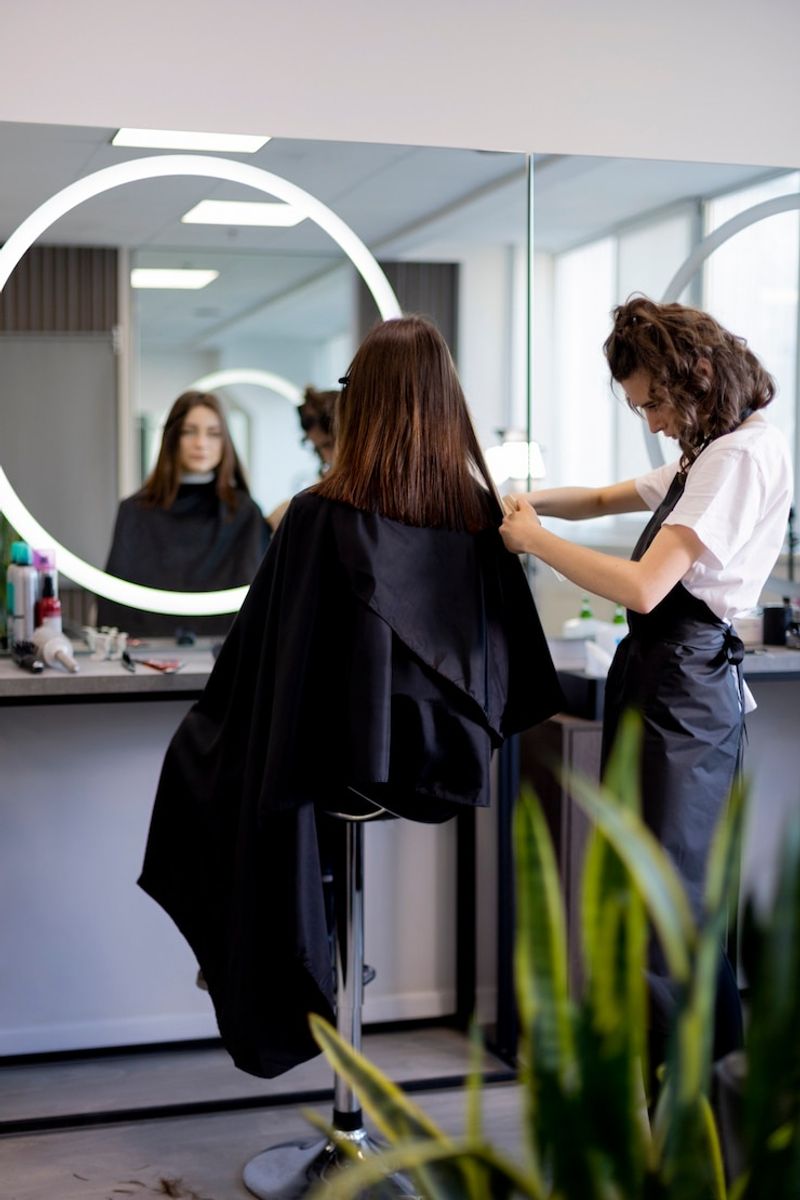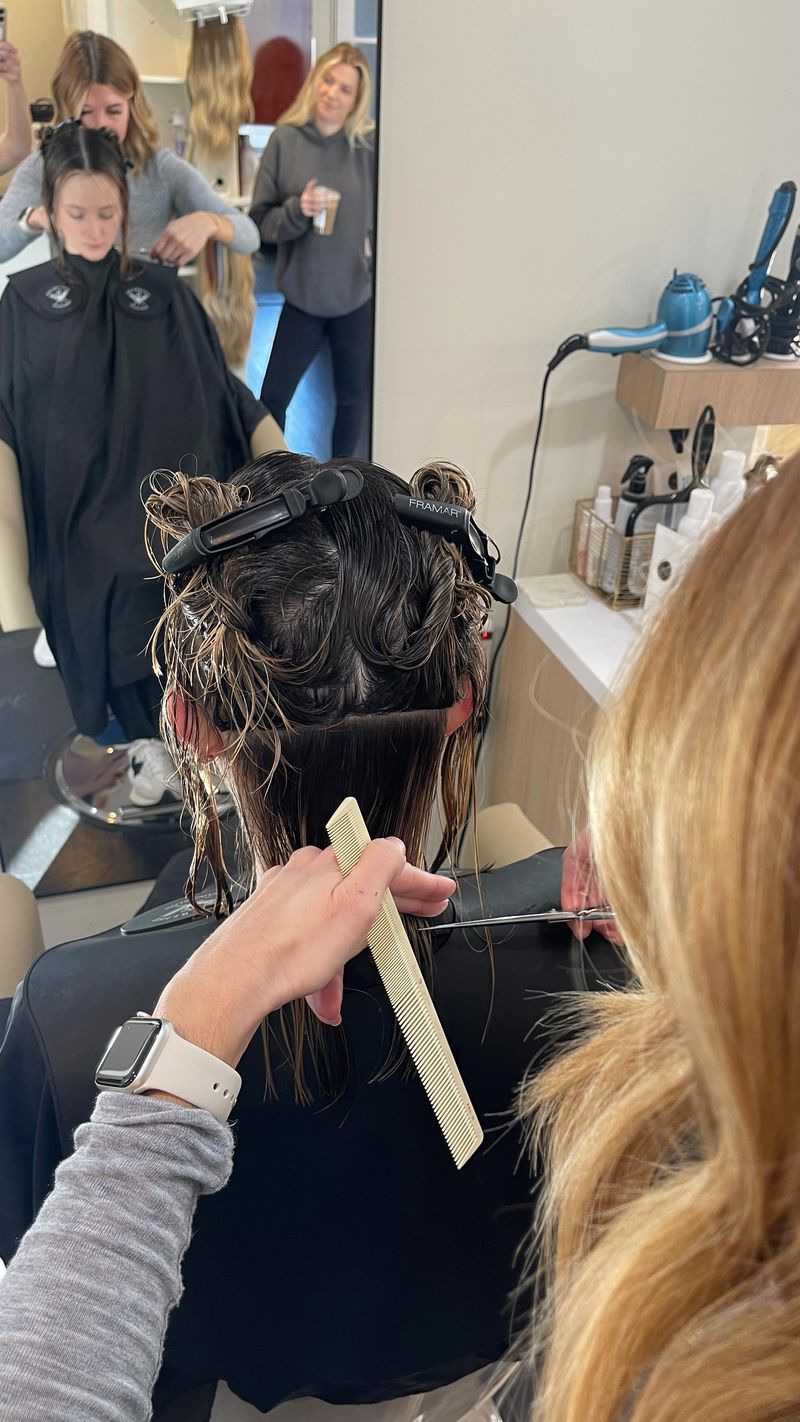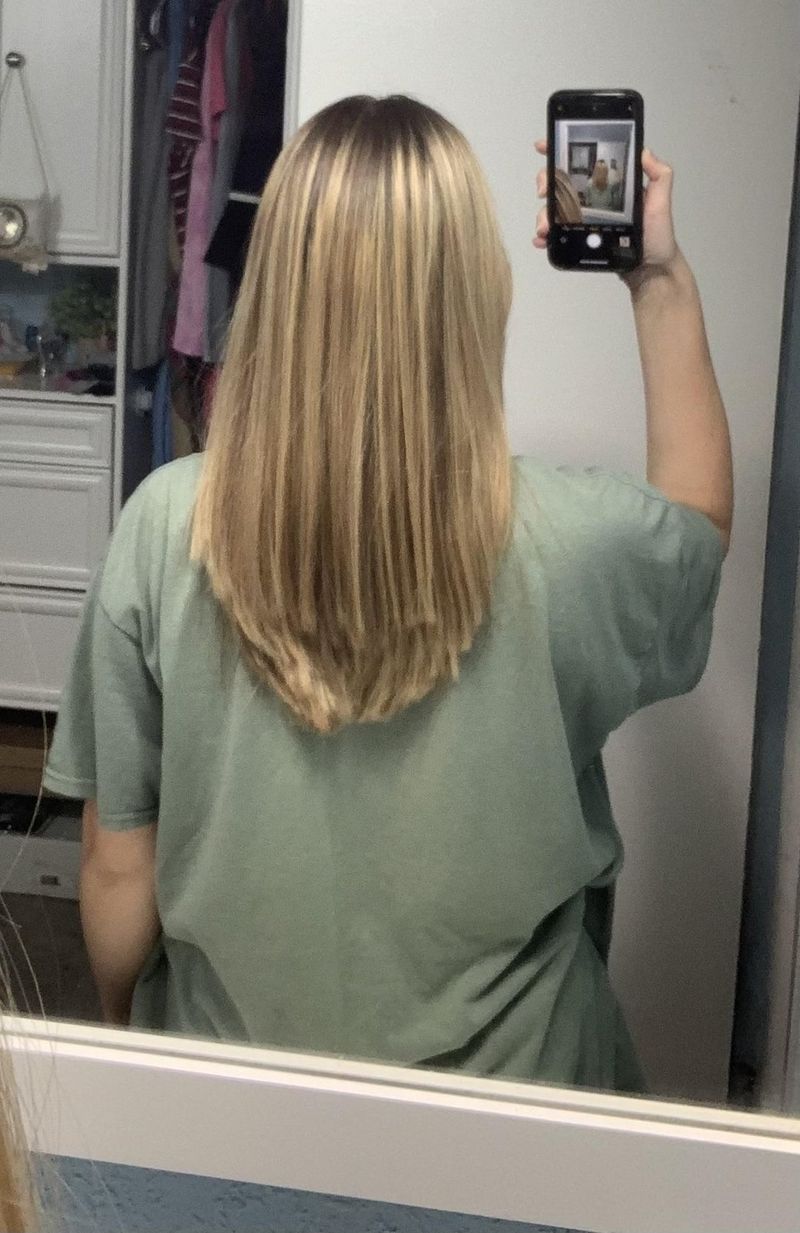14 Red Flags You’re About To Get A Bad Haircut
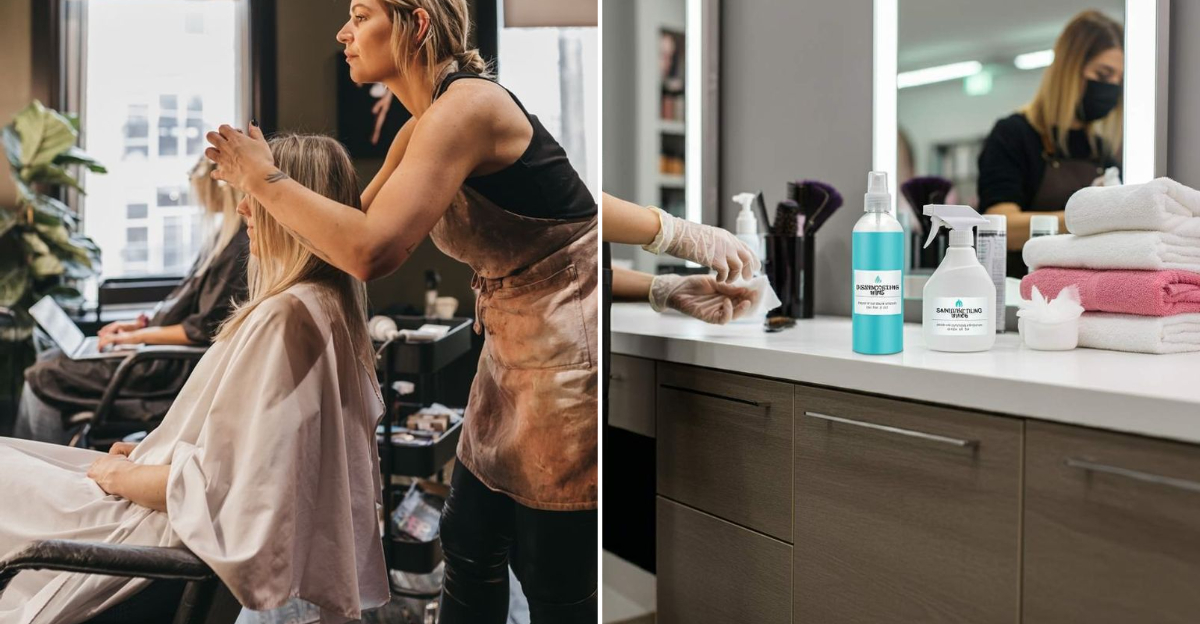
I’ve sat in enough salon chairs to know that not all haircuts are created equal.
That moment when you first glimpse your finished cut in the mirror can bring either joy or absolute horror. After years of both stunning styles and devastating disasters, I’ve learned to spot the warning signs before the first snip.
These red flags might just save you from weeks of wearing hats or explaining your new ‘look’ to confused friends.
1. The Stylist Ignores Your Photos
Bringing reference photos is Hair Appointment 101, but some stylists glance at them for half a second before dismissing them completely. “That won’t work for you” without explanation or alternatives is a massive warning sign.
A good stylist will discuss why a particular style might be challenging for your hair type and suggest modifications that would work better. They should respect your vision while being honest about realistic outcomes.
When my stylist handed back my carefully selected inspiration photos with an eye roll, I should have grabbed my purse and left. Instead, I ended up with a cut that looked nothing like what I wanted and took months to grow out.
2. Dirty or Disorganized Station
Hair clippings from the previous client still scattered across the floor. Styling products with crusty caps and dusty bottles lined up haphazardly. Tools thrown in drawers without any organization system. These visible signs of neglect speak volumes about the care you’ll receive.
My worst haircut experience began at a station where the stylist had to hunt for clean combs and kept wiping hair-product buildup off scissors with her fingers. Cleanliness isn’t just about appearances—it’s about professionalism.
A quality stylist maintains their workspace meticulously, sanitizing tools between clients and organizing their station for efficiency. Their environment reflects the precision they’ll bring to your haircut.
3. No Questions About Your Hair History
I once sat in a chair where the stylist immediately reached for her scissors without asking a single question about my hair routine. She didn’t ask how I style it daily, what products I use, or what challenges I face with my hair type. This silence spoke volumes.
Your hair history matters tremendously. Previous chemical treatments, how your hair reacts to humidity, and your morning styling time all impact what cut will work best for you. A professional should inquire about these details before making a single cut.
When a stylist skips this conversation, they’re essentially performing surgery without reviewing your medical history. The results are just as unpredictable and potentially disastrous.
4. Rushing Through Consultation
“What are we doing today?” followed by thirty seconds of half-listening before whisking you to the shampoo bowl is a recipe for disaster. I’ve experienced this rushed approach firsthand, where my attempt to explain what I wanted was cut short with a dismissive “I got it.”
The consultation sets the foundation for your entire haircut experience. It should involve back-and-forth discussion, questions from both sides, and clear agreement on the plan before any cutting begins.
When my stylist kept checking her phone during our brief “consultation” and seemed more concerned with her next appointment, I should have recognized this red flag. The resulting choppy layers proved that she hadn’t actually “got it” at all.
5. They Won’t Consider Your Face Shape
Face shape fundamentally determines which hairstyles will flatter you. Square, oval, heart, round—each requires different approaches to framing and balance. A stylist who dismisses this crucial factor might as well be cutting hair blindfolded.
I remember watching a stylist give identical chin-length bobs to three consecutive clients with wildly different face shapes. The results ranged from stunning to startlingly unflattering. When I mentioned face shape consideration, she scoffed, “That’s just marketing nonsense.”
Quality stylists analyze your unique facial structure before suggesting cuts. They understand how hair length, layers, and framing work together to highlight your best features. If they skip this step, prepare for a cut that might look great on someone else—but not necessarily on you.
6. Scissors That Sound Like Garden Shears
The telltale sound of dull scissors crunching through your hair instead of cleanly slicing should send shivers down your spine. That distinctive grinding noise means your hair is being damaged with every cut, leading to split ends before you even leave the salon.
Professional hairstylists invest in high-quality shears and maintain them religiously. They understand that sharp, precise tools are non-negotiable for clean cuts and healthy hair ends. Many top stylists have their scissors professionally sharpened monthly.
I once ignored this warning sign, reasoning that surely a professional knows best. The result? Frayed, uneven ends that looked damaged from day one. Quality tools aren’t just salon pretension—they’re essential to the fundamental technical execution of your haircut.
7. The ‘One-Size-Fits-All’ Approach
Walk into certain salons and you’ll notice a strange phenomenon—everyone walks out with variations of the same haircut. This cookie-cutter approach is a glaring red flag I’ve learned to spot immediately.
Hair texture varies dramatically between individuals. Fine, straight hair requires completely different cutting techniques than thick, curly locks. When a stylist applies identical methods to everyone regardless of hair type, disaster looms.
My friend and I once visited a trendy salon together. Despite her thick, curly mane and my fine, straight strands, the stylist approached both cuts identically. Her hair became an unmanageable pouf, while mine fell flat within hours. A skilled professional adapts their techniques to your specific hair characteristics, not the other way around.
8. They Cut Hair Soaking Wet
Hair stretches when wet—sometimes up to 30% longer than its dry length. Cutting sopping wet hair without accounting for this shrinkage has led to countless “it’s so much shorter than I expected” moments and tears in salon parking lots.
A stylist once cut my naturally wavy hair while dripping wet, assuring me the length was perfect. Hours later, what was supposed to be a long bob had shrunk into an awkward chin-length disaster that curled unpredictably. I spent six months growing out that miscalculation.
Experienced stylists understand how different hair textures behave when dry. They’ll either cut hair when it’s just damp or do a preliminary cut wet followed by fine-tuning when dry. If your stylist doesn’t consider how your specific hair type responds to moisture, prepare for unwelcome surprises.
9. Constantly Interrupting You
Communication breakdown is a major red flag I’ve experienced firsthand. Trying to explain what you want while your stylist repeatedly cuts you off mid-sentence or talks over you about their weekend plans signals trouble ahead.
During one memorable appointment, I couldn’t complete a single thought about my desired style without the stylist interjecting her own ideas or changing the subject entirely. By the time she started cutting, I realized she hadn’t absorbed anything I’d said.
Effective hairstylists listen more than they speak during consultations. They ask clarifying questions and repeat back your requests to confirm understanding. When a professional prioritizes their own voice over yours, they’re likely to prioritize their own vision over yours too—often with disastrous results.
10. No Discussion About Maintenance
That ultra-layered, textured cut might look amazing walking out of the salon, but what about tomorrow morning when you’re on your own? A stylist who doesn’t discuss home maintenance is setting you up for disappointment.
Great haircuts consider your actual lifestyle. How much time can you realistically spend styling each morning? What products do you need? What techniques should you use at home? These questions matter tremendously.
My pixie cut disaster happened because the stylist never mentioned I’d need specialized products and daily styling to achieve the look she created. She sent me home without instructions, and I never managed to recreate the salon finish. A responsible professional ensures you can maintain your new style independently—or warns you if your desired cut requires more upkeep than you’re prepared for.
11. They Dismiss Your Hair Concerns
“My hair gets frizzy in humidity” I explained, only to hear “You’ll be fine” without any actual solutions. This dismissive attitude toward specific hair concerns is a massive warning sign I’ve learned to heed.
Everyone’s hair has unique challenges. Cowlicks, widow’s peaks, double crowns, or tendency to frizz—these aren’t minor details but crucial factors that should inform cutting techniques. When a stylist waves off these concerns, they’re ignoring vital information.
A quality professional not only listens to your hair challenges but explains how they’ll address them through cutting techniques, product recommendations, or styling methods. They might say, “I’ll cut this section longer to account for your cowlick” or “Let’s avoid layers here since your hair tends to frizz.” Specific solutions, not dismissive platitudes, mark a trustworthy stylist.
12. Constant Upselling Pressure
Being held hostage in the styling chair while your stylist aggressively pushes products or services you didn’t ask for creates an uncomfortable dynamic. This pressure tactic often correlates with lower quality haircuts, as the focus shifts from your satisfaction to their commission.
During one appointment, my stylist mentioned their “special conditioning treatment” no fewer than seven times after I’d already declined. The awkward pressure made it impossible to relax, and I later realized they’d rushed my actual haircut to save time for potential upsells.
Professional stylists might recommend products they genuinely believe will benefit your hair, but they accept your decision respectfully. When product pushing takes precedence over the service you’re actually there for, it signals misplaced priorities that rarely result in a great haircut.
13. They Never Show You The Back
“You don’t need to see the back—it looks great!” Those words should immediately set off alarm bells. I’ve fallen for this one before, only to discover uneven cutting, missed sections, or bizarre graduation once I got home.
The back of your haircut is just as important as the front—maybe more so, since it’s what everyone else sees most of the time. A stylist who avoids showing you the finished result from all angles might be hiding sloppy work.
Professional hairstylists always provide a 360-degree view of your completed cut using hand mirrors or multiple angles. They want you to see their work from every perspective and will address any concerns immediately. If they rush you out of the chair without this final check, they might be hoping you won’t notice problems until you’re home—and paid.
14. Distracted By Personal Calls Or Texts
Nothing says “your haircut isn’t important to me” quite like a stylist who constantly checks their phone while holding scissors dangerously close to your ears. This distraction isn’t just annoying—it’s potentially harmful and almost always results in inconsistent cutting.
I once sat helplessly while my stylist carried on a 15-minute personal call, absentmindedly snipping away at my hair between laughing at her friend’s jokes. The resulting asymmetrical disaster required correction at another salon.
Your haircut deserves full attention and focus. Hair cutting is precision work that requires concentration, especially for complex techniques like layering or texturizing. A professional stylist puts their phone away during your appointment, understanding that split focus leads to split ends—and worse.

